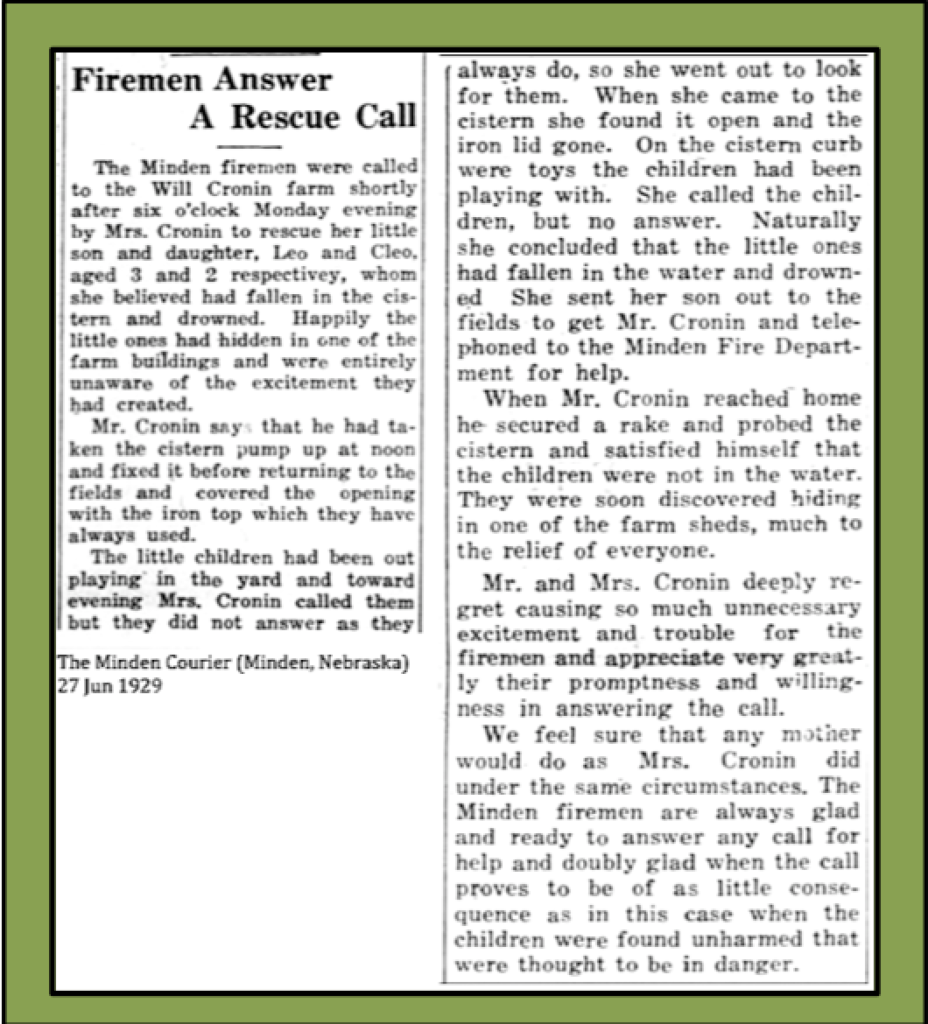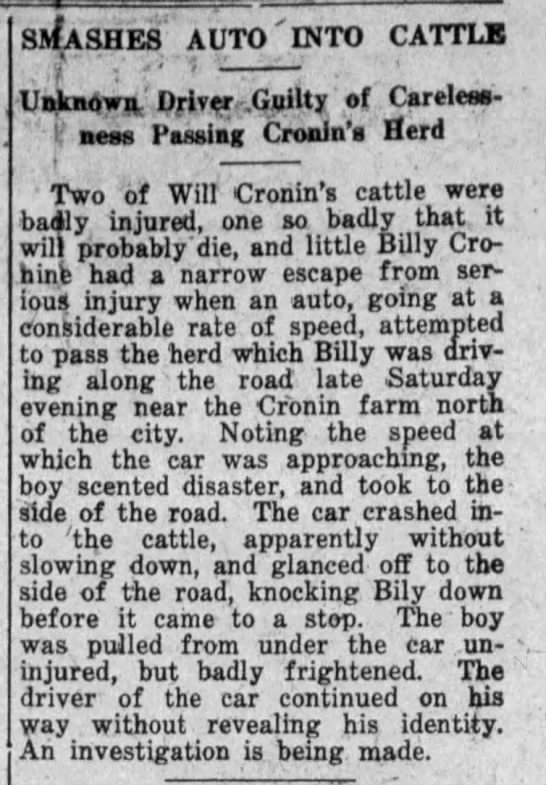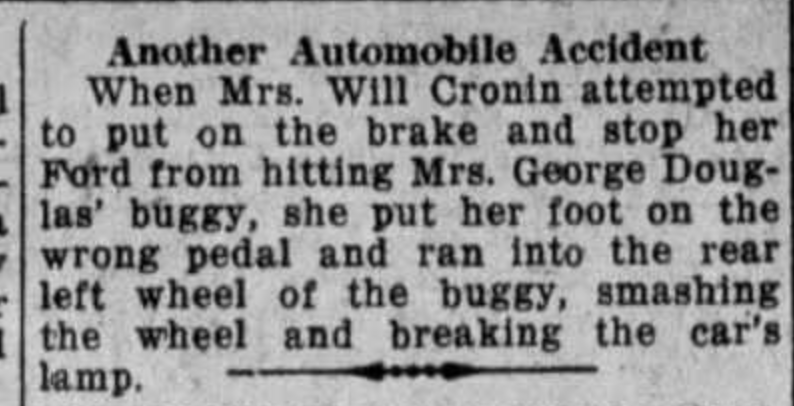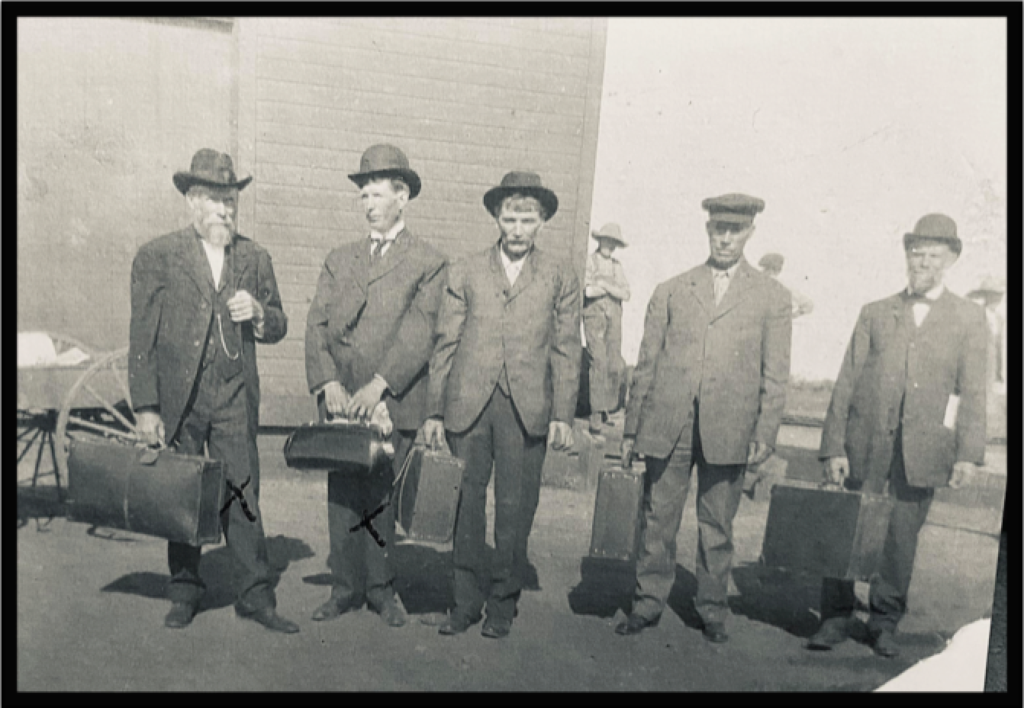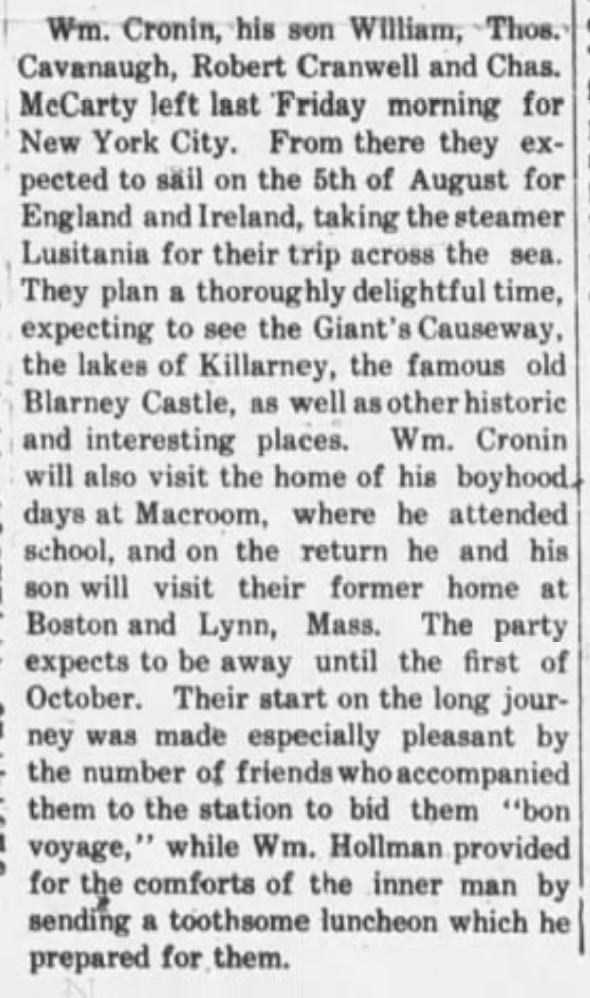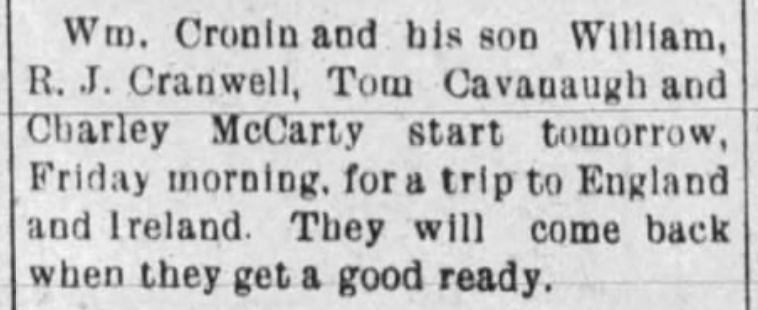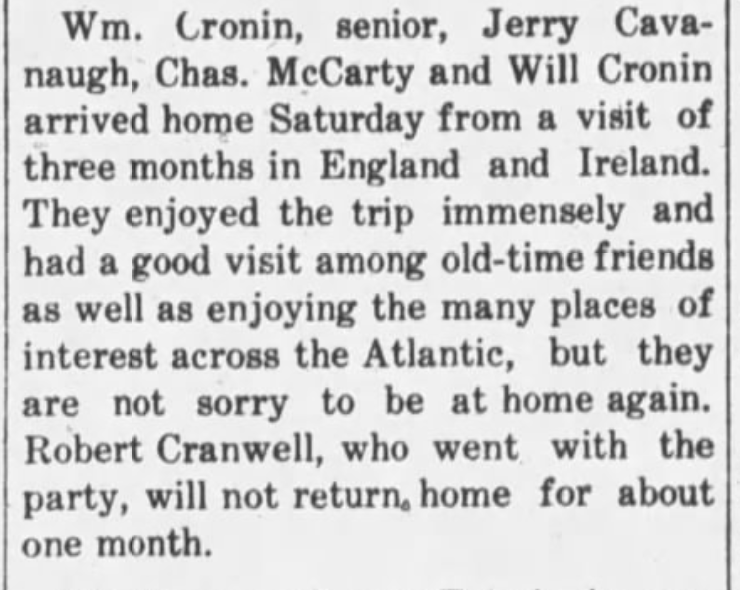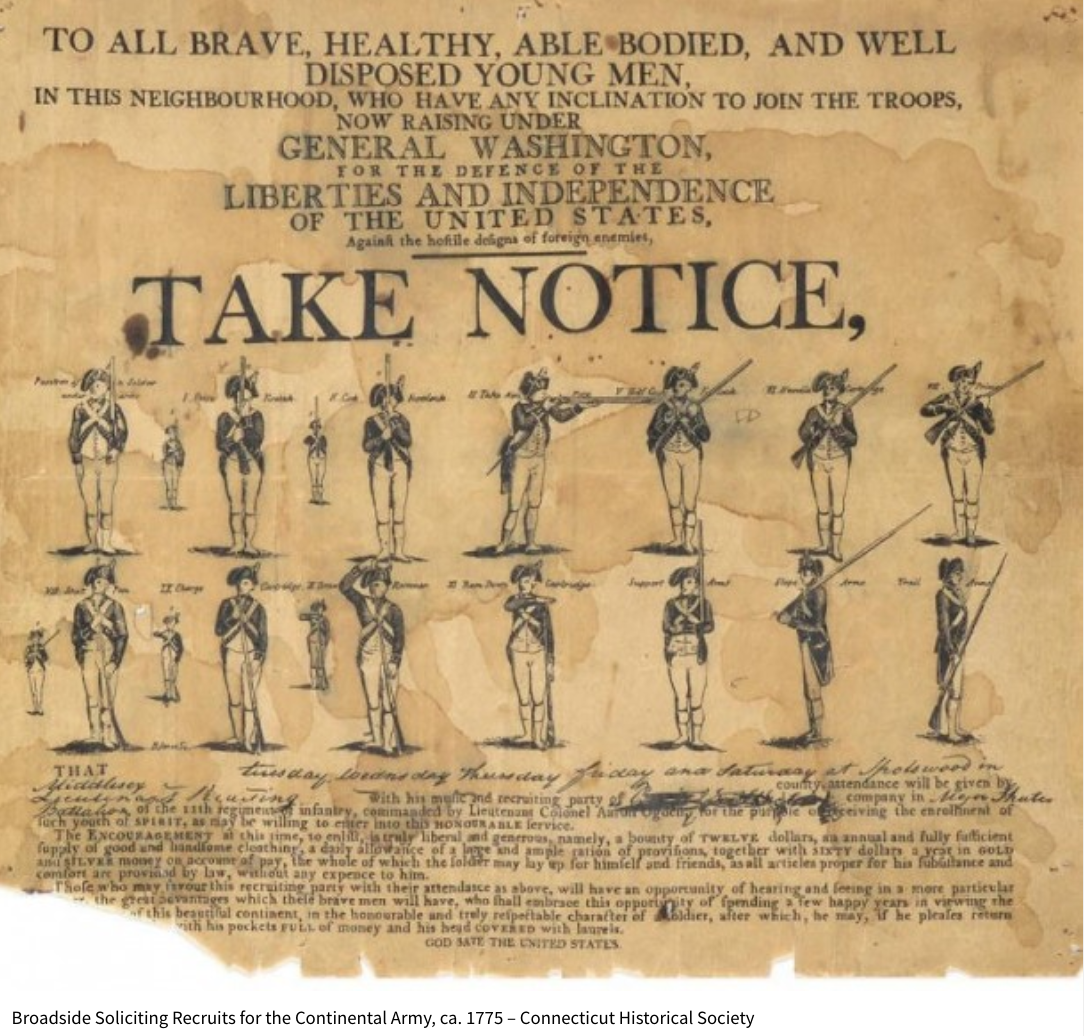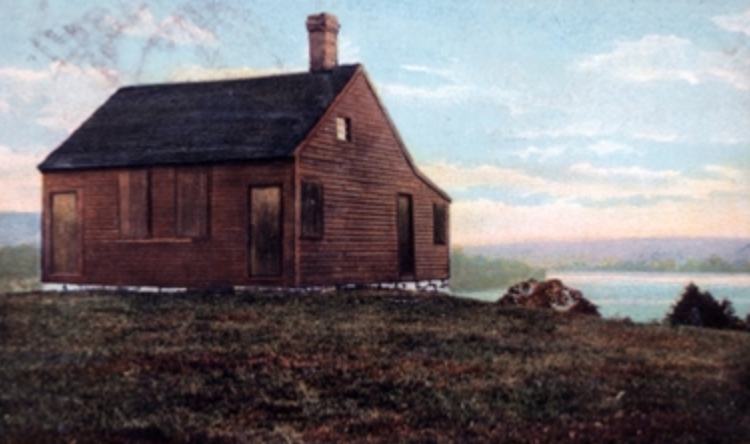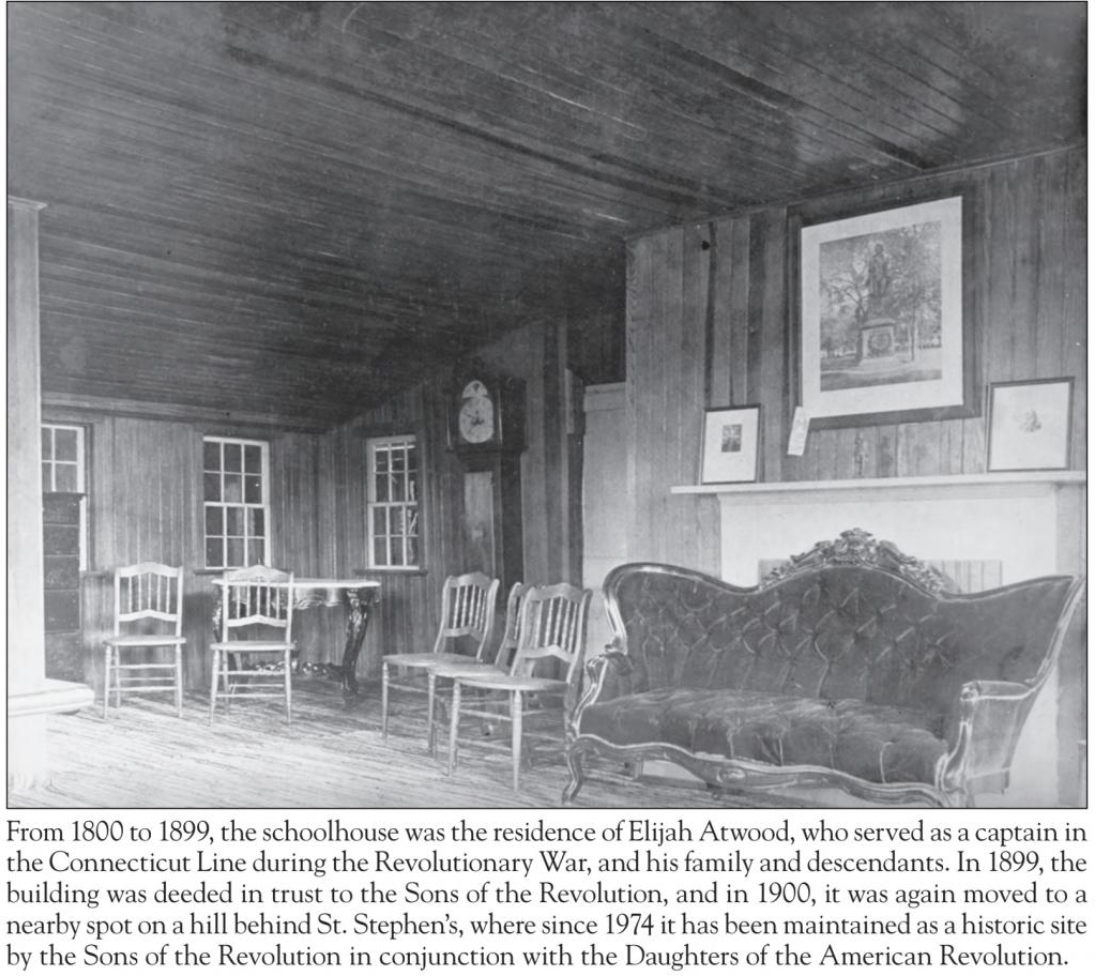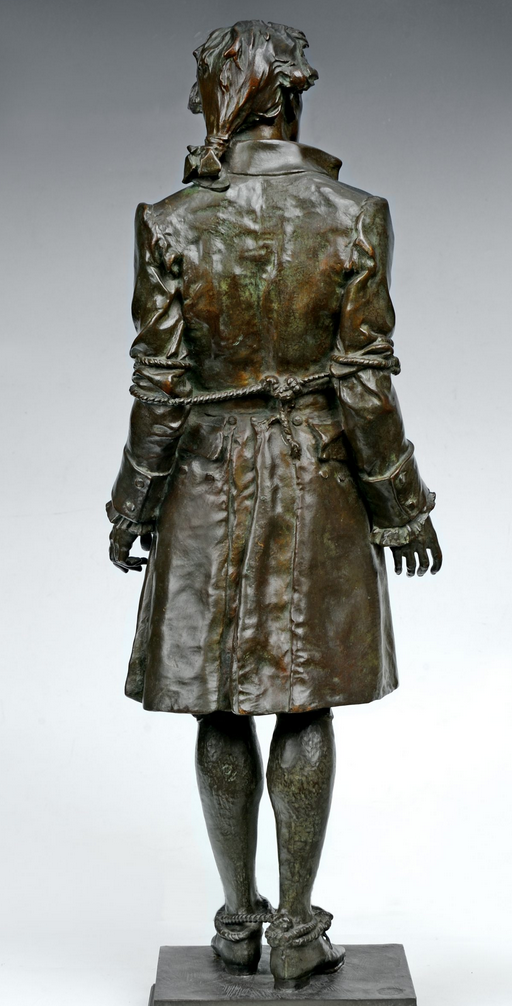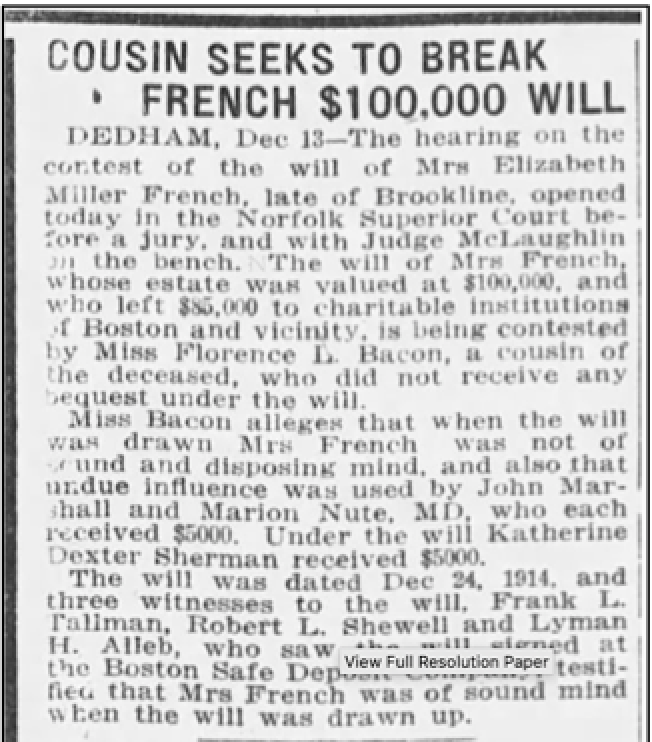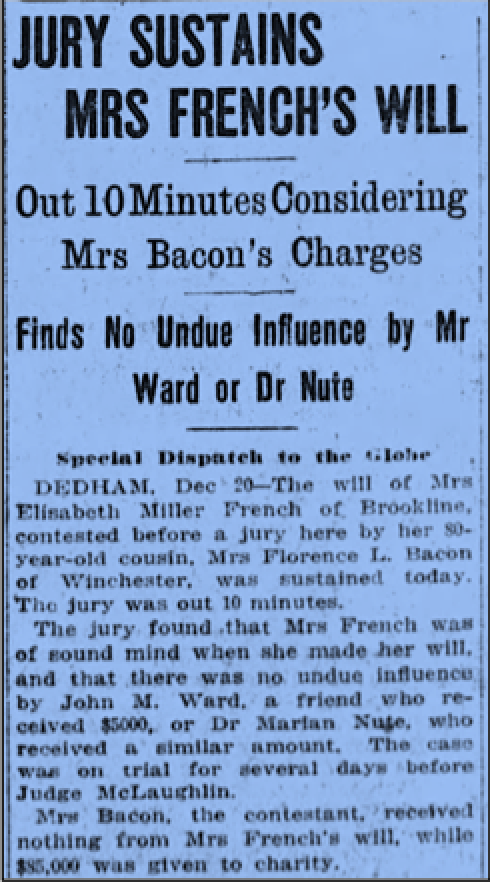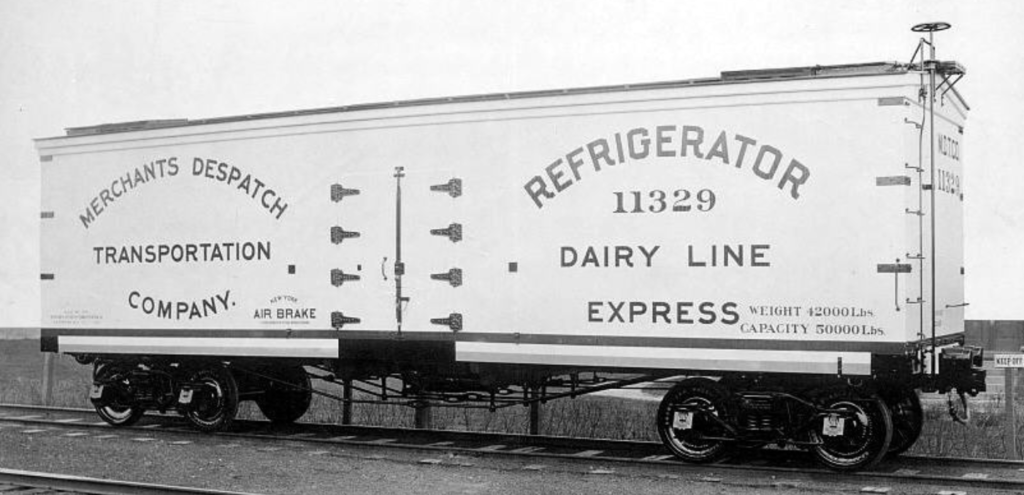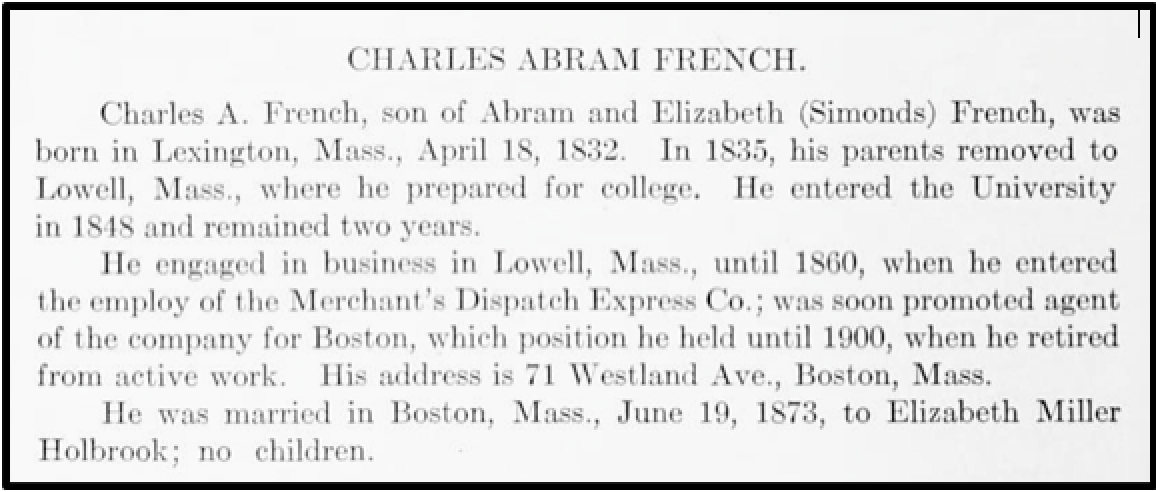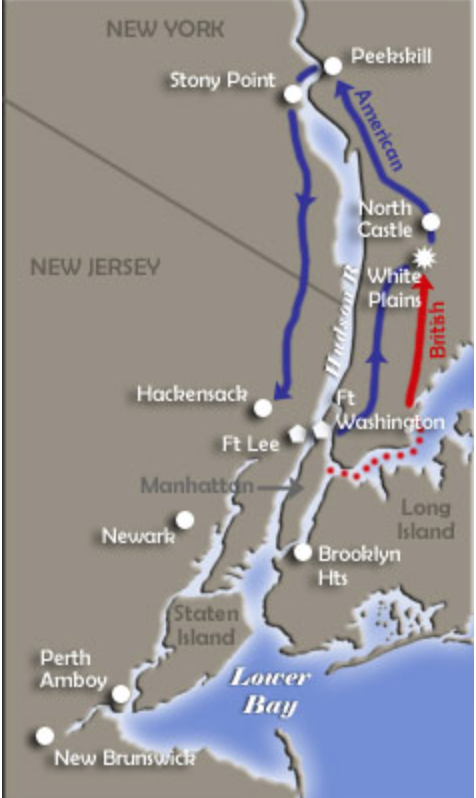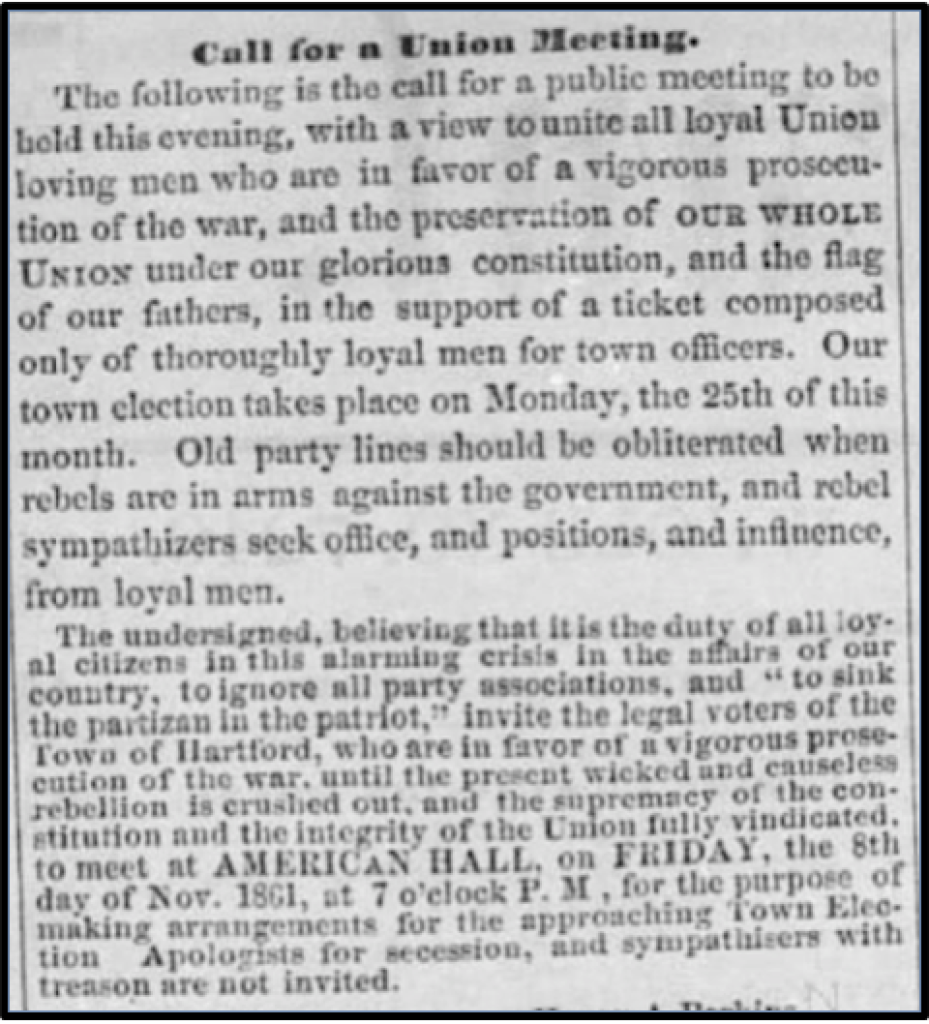“Forward the Ninth!”
This post is about Michael Daley (Daly), my 2nd great-grandfather, who was born in County Clare, Ireland in 1835. Little did his wife Hannah know that in 1861, Michael would leave their home in Waterbury, Connecticut and be gone for four years to fight in a war for his adopted country. Michael was previously noted in a story, Time for a Little Grace, which gave an overview of my maternal family line.
Michael enlisted into the Ninth Regiment, Connecticut Volunteer Infantry (Ninth) on 18 October 1861 and mustered out on 3 August 1865 (after reenlisting in October 1864). The following provides a sketch of the movements of the Ninth Regiment through Mississippi, Louisiana and, at the close of the war, Virginia. The information is drawn from the regimental history of the Ninth and news accounts. (Select sections, with minor edits, from the History of the Ninth regiment, Connecticut Volunteer Infantry in the war of the rebellion, 1861-65. Thomas Hamilton Murray, 1903)

(An enlistment poster promised) “Then followed information as to the pay of privates, the matter of bounty, etc., as follows: United States pay per month, $13; Bounty from State of Connecticut, per year, $30; Bounty to soldiers wife, per month, $6; Bounty to wife and child per month, $8; Bounty to wife and two children, per month, $10, "making the pay of privates who enlist in Connecticut companies range from fifteen dollars and fifty cents to twenty-five dollars and fifty cents, according to size of family. In addition, $100 of bounty from the United States when honorably discharged."
Recruiting for the Ninth proceeded slowly, and was somewhat retarded by lack of proper clothing and equipment. From the inception of the organization the regiment had been destined to form a part of General Butler's expedition for the capture of New Orleans, and on 4 November, with indifferent uniforms and without arms, the Ninth left New Haven by rail for Lowell, Mass where the Ninth joined the Twenty-Sixth Massachusetts Infantry, and on 21 November was ordered to Boston.

On 26 November 1861, the Ninth Connecticut and the Twenty-Sixth Massachusetts departed Boston on the steamship Constitution for Ship Island, Mississippi. “As the Constitution left the wharf, she was given hearty cheers by the large crowd that had assembled to see her off. The deck was a mass of soldiers who waved farewells to the people on shore. The band of the Ninth struck up a lively air and continued to play until well down Boston harbor.”
(Early during their time on Ship Island MS.) "The men were still wretchedly clad, and it was midwinter. Nearly half of them were without shoes and as many more without shirts; several had no coats or blankets. Some drilled in primitive attire of blouse and cotton drawers. The tents were hardly capacious enough to cover them. There was no straw to sleep on. They were without transportation, and were obliged to bring the wood for their fires four miles. This was made into rafts, and men almost naked, in water up to their arms, floated it down to camp. The Twenty-Sixth Massachusetts was equipped with warm blankets, ample tents, and two uniform suits of clothing per man; and to them the members of the Ninth furnished a contrast which would have been amusing if it were not humiliating.”
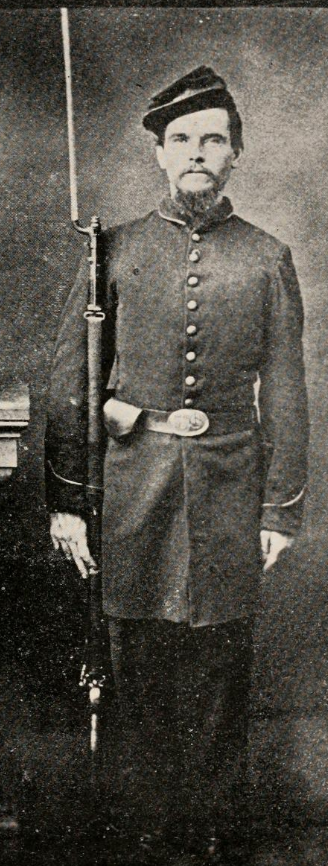
(PHOTO) Corporal Michael P. Coen, of Company F, of the Ninth, writing home to Waterbury, from Camp Parapet (130 miles south of Baton Rouge), 24 May 1862, informs his relatives that “We have got a full suit of new clothes here now, of a style similar to those of Gen. Thomas Francis Meagher’s Irish Brigade, — sky blue overcoats, dark blue or black dress coats, blue trousers with a green stripe, high black dress hats with a pair of green tassels, a green scarf of silk around the waist, besides our belts,” etc.

[1862] In June 1862, this regiment (Ninth Connecticut) was part of the expeditionary force led by Gen. Thomas Williams up the Mississippi River in the first Union campaign to capture Vicksburg. Lacking sufficient numbers for an assault or siege, the troops were put to work excavating Williams' Canal in an attempt to bypass the Vicksburg batteries. The regiment arrived at De Soto Point, opposite Vicksburg, on 25 June 1862, and began work on the canal, but was soon hampered by supply problems, lack of drinking water, and temperatures that reached above 100 degrees. Malaria, dysentery, and heatstroke spread throughout the command, incapacitating the troops. Coupling this with the drop in the river level, the canal project was abandoned on 24 July, far short of completion. Some 153 men of the 9th died within a four-month period following their arrival at the canal.
"We could not give a funeral escort to the dead; the few who were able to do guard and picket duty could not attend to any extra duty. Gen. Williams was not in sympathy with his men. He exacted the most rigid discipline. Notwithstanding the great amount of sickness prevailing, he ordered the brigade to parade every day, in marching order, with knapsacks packed. (Letter: Capt. O'Brien)
The Ninth was engaged was the battle of Baton Rouge, on 5 August. At 3 o'clock that morning the Ninth moved out and took position on the extreme left of the line of defense. At 4 A. M. the action commenced, and the Ninth was soon moved to the support of the center of the line, and later to a cemetery on the left. Thirty-five men of the Ninth were detailed as artillerists to Nims's and Everett's Batteries. The casualties of the Ninth in this action were one killed, nine wounded, and four missing.
General Orders No. 57, Department of the Gulf, the Ninth "Connecticut, represented by the sons of the ever green shamrock, fought as their brothers did at Boyne Waters." (The Battle of the Boyne was a battle in 1690 between the forces of the deposed King James II of England and Ireland versus those of King William III.) This is an interesting quote since most of the Ninth's Irish were Catholic and King James was a Protestant.
(Diary – John Curtis – Ninth Regiment CT) “It was truly awful at night or sundown, (when) the hammering of nails would be heard making boxes out of rough planks for the dead,” Curtis wrote. “Some of them were buried stitched up in a blanket. Cannonading and the firing of mortars were kept up continually. … If our men died in an engagement with the enemy we could be more satisfied, but to lay down and die like a dog with nobody to care for you is barbarous.”
[1862] 21 August, the troops began evacuating Baton Rouge, and embarking on the steamers. The troops were all aboard about 12:45 pm and the start down the river was made soon after. At daybreak, Aug. 22, the transport fleet reached Camp Parapet. While the Ninth regiment was again located at Camp Parapet, it rendered important out-post duty, and picketed the shores both up and down the river.
31 August 1862 – Military Records for Michael Daley indicate that he was sent to a hospital in New Orleans.
[Sept-Oct 1862] Duty in the defenses of New Orleans, Department of the Gulf. At New Orleans, Algiers, Mexican Gulf R. R. and mouth of the Mississippi and at Pass Manchac, Bonnet Carte, St. John Baptist District.
Nov/Dec 1862 – Michael Daley, by order of a court martial, was ordered to forfeit $5 pay for nine months. At this time, the regiment was in New Orleans. A court martial, with a forfeiture of pay, may be due a soldier caught fighting, drinking, leaving the post without a pass or a combination as achieved by another soldier in his regiment!

(General Butler) “When I occupied New Orleans I wanted to encamp a regiment in Lafayette Square a small park in the centre of the city. The best families inhabited the streets around it. I chose the Ninth Connecticut.”
[1863] Defense of important routes to and from New Orleans was among the principal Civil War assignments of the Ninth Regiment of Connecticut Volunteers. The regiment manned a fort at Manchac, which guarded the land route from the Florida parishes, a path by which black civilian refugees attempted to reach the safety of Union-held Crescent City. “Refugees come in daily — sometimes as many as a dozen at a time — men, women, and children; ragged, half-starved, and worn down with fatigue. What some of the mothers, with babes in their arms, suffer, is beyond imagination. Think of a mother and child alone two days and nights in a swamp knee-deep, with nothing to eat; where snakes, among them the deadly moccasin, abound: where in the daytime the heat is insufferable, and at night chilly; losing her way; struggling through; and, amid all, more afraid of falling again into the enemy’s hands than of the surrounding dangers.” (Diary of Major Frederick Frye)
[1864] In April 1864, the Ninth started for New Haven on its veteran furlough, arriving and receiving an enthusiastic reception on the 15th. On 18 July it left New Haven via New York and City Point for Bermuda Hundred, where it arrived on the 24th, and re-embarked on the 29 July for Deep Bottom, VA. It sailed again on July 30th for Washington, where it arrived on 1 August, and on the next day marched through Georgetown to Tenleytown. (The Ninth remained in Tenleytown) until 14 August, when, crossing the Potomac by Chain Bridge, it marched via Leesburg and Snicker's Gap to Berryville, and thence on through the Shenandoah Valley of Virginia.
[Letter – Major Healy to wife Margaret) “One afternoon I, with six others, while near Harris(on)burg, Va., in the Shenandoah Valley, drove about nine miles, looking for food, to a deserted farm with plenty of goats, pigs, potatoes and apples. I got a pot of apple butter, a bag of apples and potatoes and half a hog and had them tied to the pomel of my saddle when Mosby's guerrillas were seen in the distance on a run for us. It was certain death from the enemy to any one caught foraging. I started my horse on a run towards camp, but they were firing at me and were gaining. I cut loose all my bags and that wounded horse fairly flew and saved me.”
On 19 September 1864, the Ninth participated in the battle of Winchester, and then at Fisher's Hill. The Ninth's term of service as a regiment being about to expire, measures were taken to organize those who had reenlisted, into a battalion. Cpl. Michael Daley and 294 members of the Ninth chose to re-enlist. Under command of Captain Healy, the Ninth Battalion bore a very conspicuous part in the battle of Cedar Creek, 19 October 1864, its flag being the first planted on the recaptured works of the enemy. In this desperate action the Ninth lost thirty men in killed and wounded.
[1865] Col. Healy received sealed orders and, upon opening them at sea, found that the Ninth was to go to Savannah. GA. A very interesting event took place in Savannah while the Ninth battalion was quartered there. The command decided to celebrate St. Patrick’s Day, 1865, by a parade. In the city was a local military organization — Irish — known as the Jasper Greens. The Greens, in 1865, were, of course, Georgians and had sympathized with the Confederacy. The Ninth having decided to parade, began to look about for an Irish flag to carry beside the stars and stripes. The Jasper Greens had a fine one and courteously loaned it to Healy’s command for the occasion. This friendly act was much appreciated.
On 24 May 1865, the Ninth was ordered to Hilton Head, S. C, where there was a large gathering of organizations homeward bound. It (the Ninth) was mustered out during the first week in August 1865, and thereupon returned to New Haven.
Comments, corrections and suggestions appreciated.
Copyright © 2021. All Rights Reserved by David R. French
